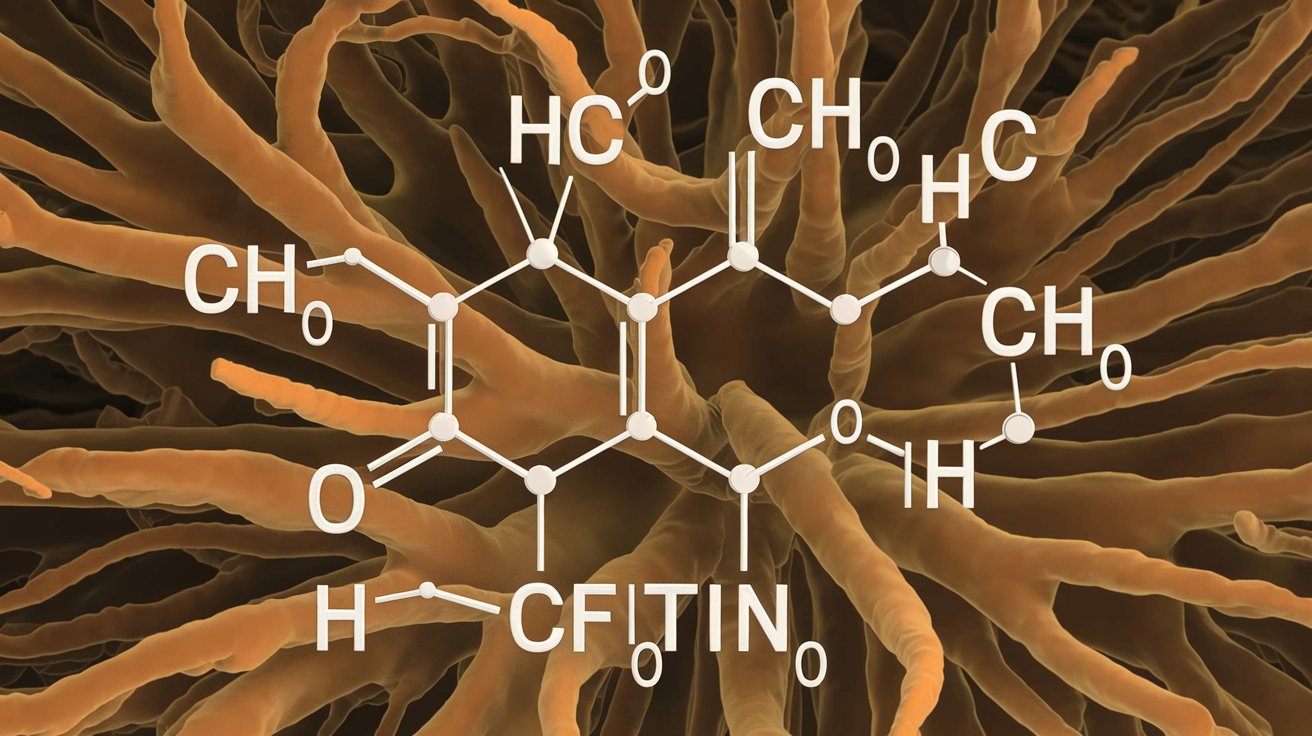
Chitin is a fascinating natural polymer found in the exoskeletons of insects, crustaceans, and even the cell walls of fungi. But what makes it so special? Chitin is incredibly strong and flexible, making it a crucial component for many organisms. It's also biodegradable, which means it breaks down naturally without harming the environment. Scientists are exploring its potential in various fields, from medicine to agriculture. Imagine using chitin to create eco-friendly packaging or even wound dressings that promote healing! Intrigued? Let's dive into 50 amazing facts about this versatile material that could change the way we think about natural resources.
Key Takeaways:
- Chitin, a natural polymer found in organisms like insects and fungi, has diverse uses in medicine, agriculture, and industry, making it a fascinating and eco-friendly material with potential for future innovations.
- From wound dressings to food packaging, chitin and its derivative, chitosan, offer unique properties that benefit healthcare, agriculture, and the environment, showcasing their versatility and potential for sustainable solutions.
What is Chitin?
Chitin is a fascinating natural polymer found in many organisms. It plays a crucial role in their structure and function. Here are some intriguing facts about chitin.
- Chitin is a long-chain polymer of N-acetylglucosamine, a derivative of glucose.
- It is the second most abundant natural polymer on Earth, after cellulose.
- Chitin is found in the exoskeletons of arthropods, such as insects, spiders, and crustaceans.
- It also exists in the cell walls of fungi and some algae.
- Chitin provides structural support and protection to these organisms.
- It is similar in structure to cellulose but has an acetylamine group instead of a hydroxyl group.
Chitin in Nature
Chitin's presence in various organisms highlights its importance in the natural world. Let's explore where chitin can be found.
- Insects use chitin to form their tough exoskeletons, which protect them from predators and environmental hazards.
- Crustaceans, like crabs and lobsters, have chitin in their shells, making them strong and durable.
- Spiders produce chitin to create their flexible yet strong exoskeletons.
- Fungi incorporate chitin into their cell walls, providing rigidity and shape.
- Some mollusks, such as squids and octopuses, have chitin in their beaks and radulae (tongue-like structures).
- Chitin is also present in the scales of certain fish, adding to their protective armor.
Chitin's Role in Medicine
Chitin's unique properties make it valuable in the medical field. Here are some ways chitin is used in healthcare.
- Chitin and its derivative, chitosan, are used in wound dressings due to their biocompatibility and biodegradability.
- They promote wound healing by providing a moist environment and preventing infections.
- Chitosan has antimicrobial properties, making it effective against a wide range of pathogens.
- It is used in drug delivery systems to enhance the absorption and effectiveness of medications.
- Chitosan-based materials are employed in tissue engineering to create scaffolds for cell growth and tissue regeneration.
- Chitin derivatives are used in contact lenses and other biomedical devices due to their biocompatibility.
Environmental Impact of Chitin
Chitin's biodegradability makes it an eco-friendly material with various environmental applications. Let's look at some of these uses.
- Chitin can be used in agriculture as a natural pesticide and fertilizer.
- It helps improve soil health by promoting the growth of beneficial microorganisms.
- Chitosan is used in water treatment to remove heavy metals and other contaminants.
- It is also employed in the production of biodegradable plastics, reducing plastic pollution.
- Chitin-based materials are used in packaging to create sustainable and compostable alternatives to traditional plastics.
- Researchers are exploring the use of chitin in biofuel production as a renewable energy source.
Chitin in Food and Nutrition
Chitin and its derivatives have applications in the food industry as well. Here are some interesting facts about their use in food and nutrition.
- Chitosan is used as a food preservative due to its antimicrobial properties.
- It helps extend the shelf life of fruits, vegetables, and other perishable items.
- Chitosan is used in food packaging to create films that prevent spoilage and contamination.
- It is also employed as a dietary supplement for weight loss and cholesterol management.
- Chitosan can bind to fats and cholesterol in the digestive tract, reducing their absorption.
- It is used in the production of low-calorie and low-fat foods as a fat replacer.
Chitin in Industry
Chitin's versatility extends to various industrial applications. Here are some ways it is used in different industries.
- Chitin is used in the textile industry to create biodegradable fibers and fabrics.
- It is employed in the production of paper and cardboard to improve strength and durability.
- Chitosan is used in the cosmetics industry for its moisturizing and anti-aging properties.
- It is also used in hair care products to improve hair strength and shine.
- Chitin-based materials are used in the production of adhesives and coatings.
- They are employed in the manufacturing of biodegradable films and packaging materials.
Chitin Research and Future Potential
Ongoing research continues to uncover new applications and benefits of chitin. Here are some exciting developments and future possibilities.
- Scientists are exploring the use of chitin in the development of new antibiotics and antifungal agents.
- Chitin-based materials are being investigated for their potential in regenerative medicine and tissue engineering.
- Researchers are studying the use of chitin in the development of new biomaterials for medical implants and devices.
- Chitin is being explored as a potential source of renewable energy through biofuel production.
- Scientists are investigating the use of chitin in the development of new environmentally friendly pesticides and fertilizers.
- Chitin-based materials are being studied for their potential in the creation of sustainable and biodegradable plastics.
Fun Facts about Chitin
Chitin has some surprising and fun aspects that make it even more interesting. Here are a few fun facts about chitin.
- Chitin is what gives mushrooms their unique texture and firmness.
- The word "chitin" comes from the Greek word "chiton," meaning "tunic" or "envelope."
- Chitin is used in the production of edible films and coatings for fruits and vegetables.
- Some insects, like beetles, have chitin in their wings, making them strong and lightweight.
- Chitin is used in the production of biodegradable golf balls that dissolve in water.
- Chitosan is used in winemaking to clarify and stabilize wine.
- Chitin-based materials are being used to create eco-friendly fishing nets that degrade over time.
- Researchers are exploring the use of chitin in the development of new materials for 3D printing.
The Fascinating World of Chitin
Chitin, a versatile and abundant natural polymer, plays a crucial role in various ecosystems. Found in the exoskeletons of insects, crustaceans, and fungi, it provides structural support and protection. Its applications extend beyond nature, impacting industries like agriculture, medicine, and biotechnology. From biodegradable plastics to wound dressings, chitin's potential seems limitless.
Understanding chitin's properties and uses can inspire innovative solutions for environmental and health challenges. Its biodegradability makes it an eco-friendly alternative to synthetic materials, reducing plastic waste. In medicine, chitin-based products promote healing and reduce infection risks.
Exploring chitin's diverse applications highlights its importance in both nature and technology. As research continues, new uses for this remarkable polymer will likely emerge, further showcasing its value. Embracing chitin's potential can lead to sustainable advancements benefiting our planet and future generations.
Frequently Asked Questions
Was this page helpful?
Our commitment to delivering trustworthy and engaging content is at the heart of what we do. Each fact on our site is contributed by real users like you, bringing a wealth of diverse insights and information. To ensure the highest standards of accuracy and reliability, our dedicated editors meticulously review each submission. This process guarantees that the facts we share are not only fascinating but also credible. Trust in our commitment to quality and authenticity as you explore and learn with us.


